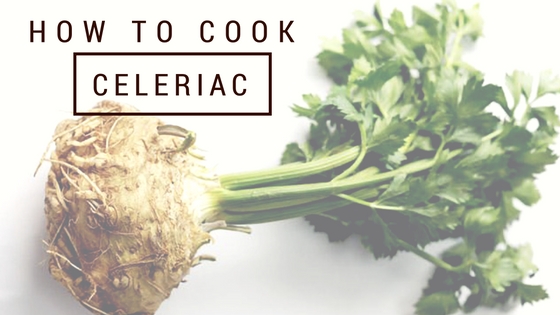If you’re like many people, you may have never heard of the root vegetable celeriac. Pronounced “sell-air-ee-ack”, this tasty root vegetable is sometimes compared to turnips or butternut squash. Although, it’s taste is a little more comparable to something like celery, which makes sense given that celeriac is just another word for celery root.
While celeriac is absolutely delicious and can be used in a number of different ways in the kitchen (from boiling to mashing to evening roasting), it does have one problem: it’s not terribly pretty. I know; I know – we talk all the time about food waste and how one of the major sources of this is people passing up funky looking fruit and vegetables for pieces that are more visually appealing. And that’s the problem. Because of the celeriac’s outward appearance of a knobby dirty looking root with some weeds growing out of it, it often gets overlooked for more traditional veggies.
This is a terrible oversight, and hopefully we can change some minds about this great food that offers kind of an ideal alternative to potatoes and other starches, and even offers some solid nutritional benefits.
How to Cook Celeriac
One of the reasons many people in the US don’t see or hear about celeriac as often is that it’s much more commonly used in Europe and parts of Asia. But it’s incredibly versatile for growing and pretty easy to grow at home in a backyard garden.
Celeriac can be eaten both cooked and raw, and there are plenty of cooking uses for both. For starters, raw celeriac is a French staple in the dish “celerie remoulade”, which is basically blanched grated celeriac tossed in a mustard sauce.
Because it also offers far less calories than potatoes (a mere 30 calories per half cup), it’s also used frequently as an alternative to potatoes. Celeriac can be boiled, mashed, roasted, or even fried like potatoes and is way healthier.
Before you start cooking celeriac, however, there are a few things you need to know about prep. For starters, when picking a celeriac, make sure there are no large discolorations. The growing season lasts from September to around April, so this is the prime time to pick these up. Make sure the celeriac feels heavy when you pick it up, and that the root is firm.
Once you’re ready to cook, wash the root thoroughly with cold water. Next, using a sharp knife, cut off the top and the bottom of the celeriac to get rid of any roots dangling below, along with the greens on top. Use a potato peeler to slice off the skin, so that the white “meat” of the celeriac is revealed. Celeriac is similar to apples in that it can discolor quickly if you leave it out for a bit before using it in a recipe. If you’re prepping early in advance, toss the celeriac into a bowl of water with a lemon juice to prevent it from turning brown.
How to Boil Celeriac
Boiling celeriac is incredibly simple. Start by boiling water in a large saucepot. Cut the celeriac into small chunks and add into boiling water. Let the celeriac boil for 20 minutes or until the flesh is slightly tender. Remove, season, and serve as a side dish.
How to Mash Celeriac
Mashed celeriac is incredibly similar to mashed potatoes, but is slightly healthier and offers an interesting change in the flavor. Start by boiling the celeriac (use the instructions above). Once the celeriac has finished boiling, strain the water out of the saucepan and move the celeriac to a bowl. Add milk or cream and using a potato masher, mash the celeriac and stir into the cream until the mixture is smooth. Mix in a little butter and season the way you like it.
How to Roast Celeriac
To roast celeriac, start by preheating the oven to 400 degrees Fahrenheit. Slice the celeriac into rectangular pieces or wedges. Add the celeriac slices to a mixing bowl and add enough olive oil to evenly coat all pieces, along with a few sprigs of thyme, minced garlic, and a sprinkle of salt. Toss the celeriac in the mixture until fully coated and then place the slices of celeriac on a baking sheet and place in the oven. Roast for 35 minutes (turning them once during the process). Once ready, they should be slightly soft and tender to the touch and a crispy golden brown on top. Serve warm.
Do you have any tips on how to cook celeriac? What are your favorite celeriac or celery root dishes? Share them with us in the comments!





